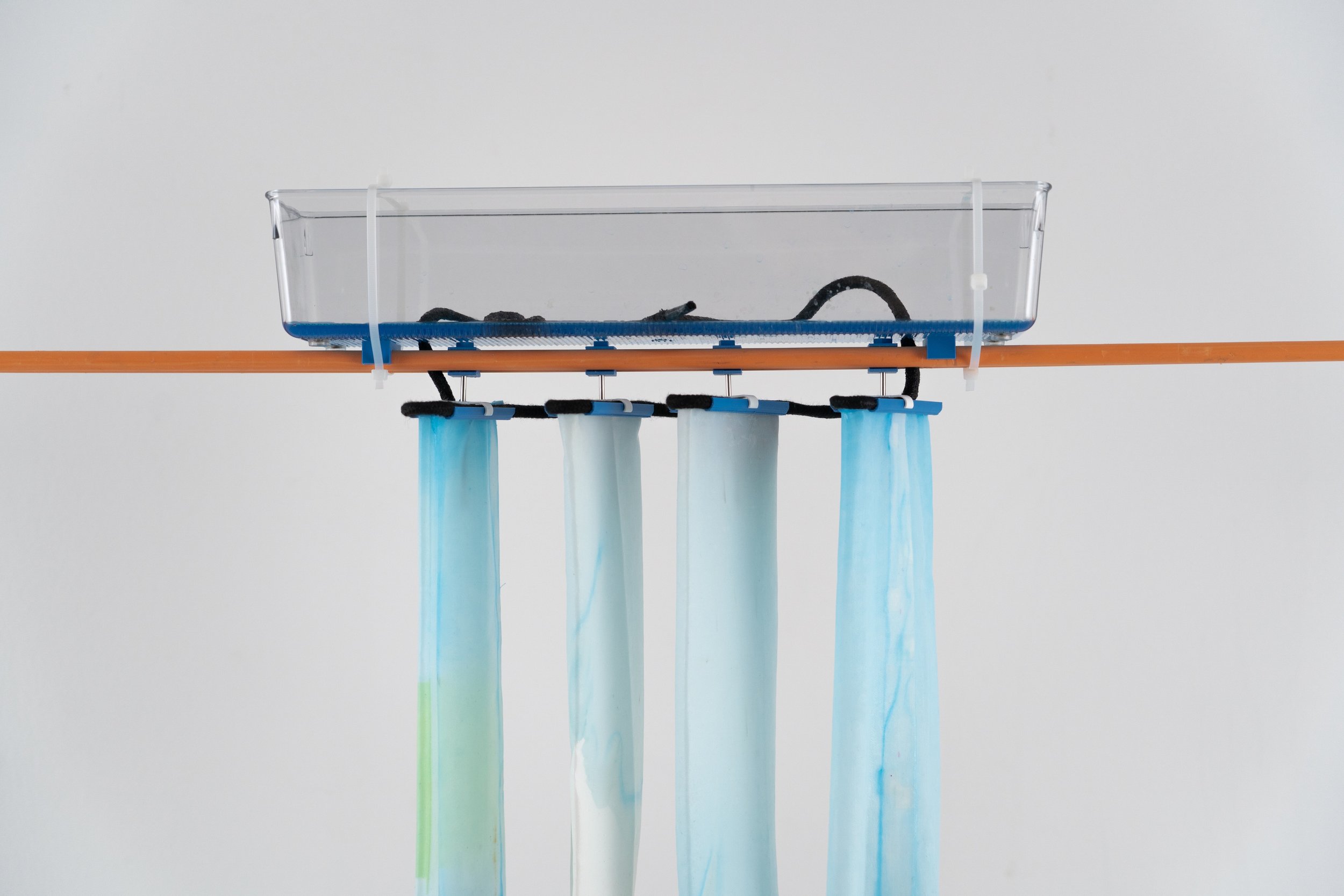Discipline Air Cooler design
Size Blue-1200*1250*250mm (HxWxD)
Red -1950*900*250mm (HxWxD)
Material Aluminum, Natural fibers, PLA,Silicon
How To Stay Cool?
(2024)
Since industrialization, human activities have increased global temperatures by 1.1°C, leading to extreme heat. Air conditioners have become a common solution for cooling, but they consume significant electricity, often generated from fossil fuels, exacerbating the greenhouse effect.
COOLCURTAIN is a conceptual design that challenges the conventional form and function of air conditioners. Instead of the typical "box" design, COOLCURTAIN explores a different direction—an innovative, low-tech curtain that uses indirect evaporative cooling to lower room temperatures during summer without increasing humidity.
This project aims to demonstrate that air conditioners don't need to conform to traditional shapes or methods, opening up new possibilities for sustainable and functional cooling solutions that rethink how we interact with our environment.
Direct Evaporative Cooling: This method cools air by passing it through moist pads or using a water spray, where the air's heat is absorbed by the water, causing it to evaporate. For this process to be efficient, dry air is required.
Indirect Evaporative Cooling: In this method, air is passed through a moist channel, which cools the air without increasing its humidity. It uses two separate air streams: the working air stream (which is cooled and humidified) and the supply air stream (which passes through the cooled channel, reducing its temperature without gaining moisture).
(b) Warm air from outside
(a) Working air flow
(c) Supply air flow
(d) Water-permeable inside
(e) Waterproof outside
(red) Warm air from outside
Simplified construction
(blue) Working airflow
After experiments, a 1:6 simulation test with wet tunnels in a thermobox (20 m², 1.2 m x 1.2 m window size, with moisture levels of 50-75%) showed that the simplified construction achieves a temperature difference of 4-6°C between the inside and outside of the room.
On
Off
This curtain operates similarly to a jalousie. When the channels are positioned horizontally, the curtain closes, blocking light and airflow. However, when aligned vertically, it opens, allowing both to pass through, cooling the air.
Dry
The moist channels are lined with absorbent materials (inside) and waterproofed (outside) to prevent leaks. Dry air channels add flexibility and structural variety. A specialized hanging system ensures fabric flexibility and effective water transport, with clamps at the top, hooks at the ends, and weights at the bottom to enhance airflow.
Moist




























